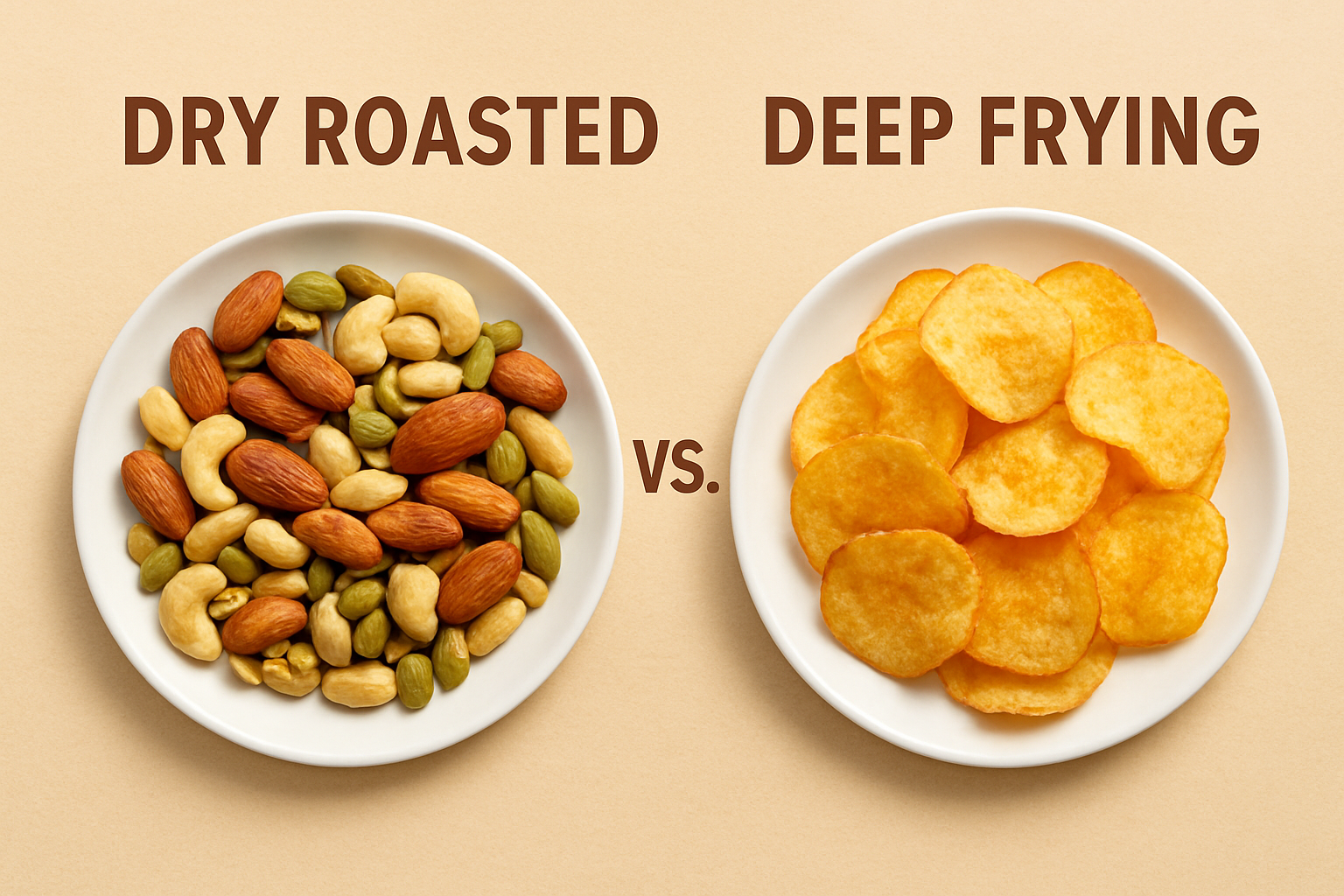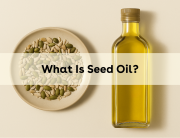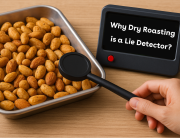For the Best Tasting Roasted Nuts, Skip the Oil. Here’s Why.
So you have a bag of beautiful raw nuts or seeds, and you want to unlock that warm, toasty, incredibly snackable flavour. You head to the stove, grab a pan, and your hand instinctively reaches for the bottle of cooking oil. It’s a natural reflex in the kitchen—hot pan, add oil.
But for nuts and seeds, that instinct is wrong.
If you want to make them taste their absolute best, and keep them as healthy as possible, you need to leave the oil in the pantry. The secret isn’t adding fat; it’s using the perfect fat already locked inside the nut itself.
Why Adding Oil is a Mistake
When you add canola oil or another vegetable oil to the pan, you’re unintentionally doing a few things that sabotage your snack.
First, you’re creating a barrier. Instead of the nut toasting from the inside out, it’s essentially shallow-frying in the oil. This gives it a greasy film that dulls the pure, nutty flavour. You end up tasting the oil as much as you taste the almond or pecan.
You’re also adding a load of extra calories that you just don’t need. Nuts are already rich in their own healthy fats; adding more from a processed oil is overkill.
And from a health perspective, you’re introducing a less stable ingredient. Many common cooking oils are highly processed and their fats can break down when heated, creating undesirable compounds. You’re taking a perfectly healthy food and adding a questionable element to it.
The Smarter Way: Let the Nut Do the Work
Here’s the magic of dry roasting: you use the nut’s own oil to cook itself. It’s brilliant.
When you gently heat a raw nut in a dry pan or oven, its natural oils slowly come to the surface. The nut begins to sizzle and toast in its own essence. This process brings out a clean, deep, and complex flavour that you simply cannot get with added oil.
The taste is pure—it’s the soul of the nut, turned up to eleven.
The texture is far superior, too. You get a light, crisp, and satisfying snap instead of a heavy, oily crunch. Because there’s no greasy residue, they’re also much more pleasant to eat by the handful. Plus, the heat helps break down some of the compounds that can make raw nuts tough to digest.
It’s simpler, cleaner, and the results are infinitely more delicious.
Ready to Try It? It’s This Easy.
————————————————————————————————————————————————————————-
The Gold Standard: The Oven This method gives you the most even, perfect roast.
————————————————————————————————————————————————————————-
- Set your oven to 325°F (about 160°C). A lower temperature is key to prevent scorching.
- Spread your nuts or seeds on a bare baking sheet. Give them space—don’t crowd the pan.
- Roast for 10-15 minutes for most nuts, a little less for smaller seeds. Your nose is your best timer; when the kitchen smells wonderfully toasty, they’re close. They’re done when they’ve darkened just a shade.
- Let them cool completely on the pan. This is when they develop their final crunch.
————————————————————————————————————————————————————————-
The Quick Method: The Stovetop Perfect for a small batch when you’re in a hurry.
————————————————————————————————————————————————————————-
- Use a dry skillet over medium-low heat.
- Add your nuts and keep them moving. Stir or shake the pan constantly to avoid hot spots.
- After 5-7 minutes, when they’re fragrant and a little glossy from their own oils, they’re done. Immediately pour them onto a cool plate to stop the cooking process.
That’s all there is to it. It’s one less ingredient, one less step, and a world of difference in taste. Trust me, once you try a truly dry-roasted nut, you’ll wonder why you ever let a bottle of oil get near them.





